Berwick, a town steeped in history and cultural heritage, stands as a testament to the enduring spirit of a community that has weathered the storms of time. From its ancient origins to its vibrant present, Berwick’s story is one of resilience, innovation, and unwavering pride.
Nestled amidst rolling hills and picturesque landscapes, Berwick’s architectural landmarks, museums, and art galleries invite visitors to delve into its rich past and appreciate its artistic legacy. The town’s traditions, festivals, and events showcase the warmth and hospitality of its people, creating a vibrant tapestry of cultural experiences.
History of Berwick
Berwick-upon-Tweed, situated on the border between England and Scotland, has witnessed centuries of conflict and played a pivotal role in the shaping of British history.
Berwick’s origins can be traced back to the 6th century when it was a small fishing village under the control of the Anglo-Saxon kingdom of Northumbria. In the 12th century, the town became a possession of the Scottish crown, and its strategic location on the border made it a frequent target of English attacks.
Anglo-Scottish Wars
During the Anglo-Scottish Wars of the 13th and 14th centuries, Berwick changed hands several times between the two nations. In 1296, Edward I of England captured Berwick and fortified it as a key stronghold in his campaign to conquer Scotland.
The Scots retook Berwick in 1318, but it was again captured by the English in 1333. In 1482, Berwick was finally ceded to England under the Treaty of Edinburgh.
English Civil War
Berwick played a significant role in the English Civil War of the 17th century. The town was held by the Royalists until 1644, when it was captured by the Parliamentarians under Sir William Waller.
Berwick is a fascinating town steeped in history and culture. If you’re interested in exploring the rich heritage of Europe, consider embarking on one of the many cultural tours in Europe. These tours offer an immersive experience, allowing you to delve into the traditions, art, and architecture that have shaped the continent’s identity.
Berwick itself is a great place to start your cultural journey, as it boasts a wealth of historical sites, museums, and galleries.
Berwick remained under Parliamentarian control until the Restoration in 1660, when it was returned to the English Crown.
Berwick, a charming town nestled in southern Maine, boasts a rich history dating back to the 17th century. Its quaint streets and historic buildings offer a glimpse into its past. For those seeking a deeper understanding of the region’s history, a visit to the Atlanta History Center is highly recommended.
This renowned institution houses a vast collection of artifacts and exhibits that showcase the vibrant tapestry of Atlanta’s past. From the Civil War era to the modern-day metropolis, the center provides an immersive journey through the city’s history. After exploring Atlanta’s rich past, returning to Berwick offers a serene contrast, where visitors can appreciate the town’s timeless charm and the tranquility of its coastal setting.
Jacobite Rebellions
During the Jacobite Rebellions of the 18th century, Berwick was a key target for the Jacobites, who sought to restore the Stuart monarchy to the British throne.
In 1715, the Jacobites captured Berwick, but they were defeated by the government forces at the Battle of Preston. In 1745, the Jacobites again captured Berwick, but they were again defeated at the Battle of Culloden.
Modern History
In the 19th century, Berwick underwent a period of industrial expansion, and its population grew rapidly. The town became a major center for shipbuilding, engineering, and fishing.
In the 20th century, Berwick’s economy declined, but it remains an important cultural and historical center.
Cultural Heritage of Berwick
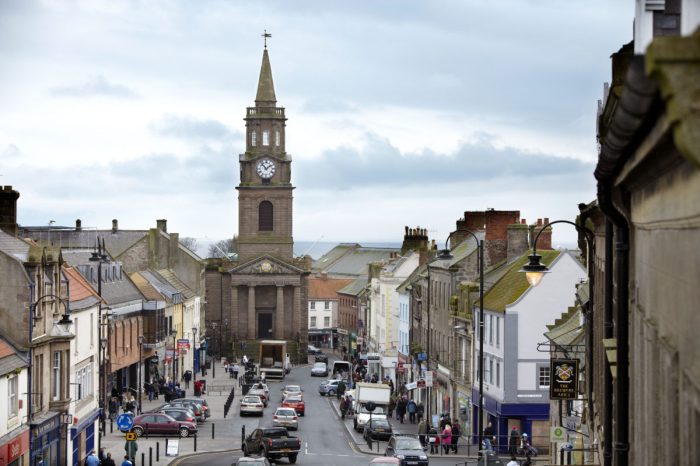
Berwick boasts a rich cultural heritage that blends the influences of its diverse past. Its architectural landmarks, museums, and art galleries showcase its historical significance and artistic legacy. Local traditions, festivals, and events further contribute to its vibrant cultural identity.
Architectural Landmarks
Berwick’s architectural heritage is a testament to its rich history. The iconic Berwick Castle, dating back to the 13th century, stands as a symbol of the town’s medieval past. The town walls, built in the 14th century, provide a glimpse into Berwick’s defensive history. Other notable landmarks include the Berwick-upon-Tweed Town Hall, a Victorian masterpiece, and the Old Bridge, a graceful stone bridge spanning the River Tweed.
Museums and Art Galleries
Berwick is home to several museums and art galleries that celebrate its cultural heritage. The Berwick Museum and Art Gallery houses a diverse collection of artifacts and artwork, including local history, archaeology, and contemporary art. The Granary Gallery showcases the work of local and regional artists, while the Berwick Film and Media Arts Festival showcases independent films and media.
Local Traditions, Festivals, and Events
Berwick’s cultural identity is also shaped by its local traditions, festivals, and events. The Berwick Tweed Ride is an annual cycling event that celebrates the town’s textile heritage. The Berwick Film and Media Arts Festival attracts filmmakers and enthusiasts from around the world. The Berwick International Festival of Nature showcases the town’s natural beauty and wildlife. These events foster a sense of community and bring visitors to experience Berwick’s unique cultural offerings.
Economic Profile of Berwick
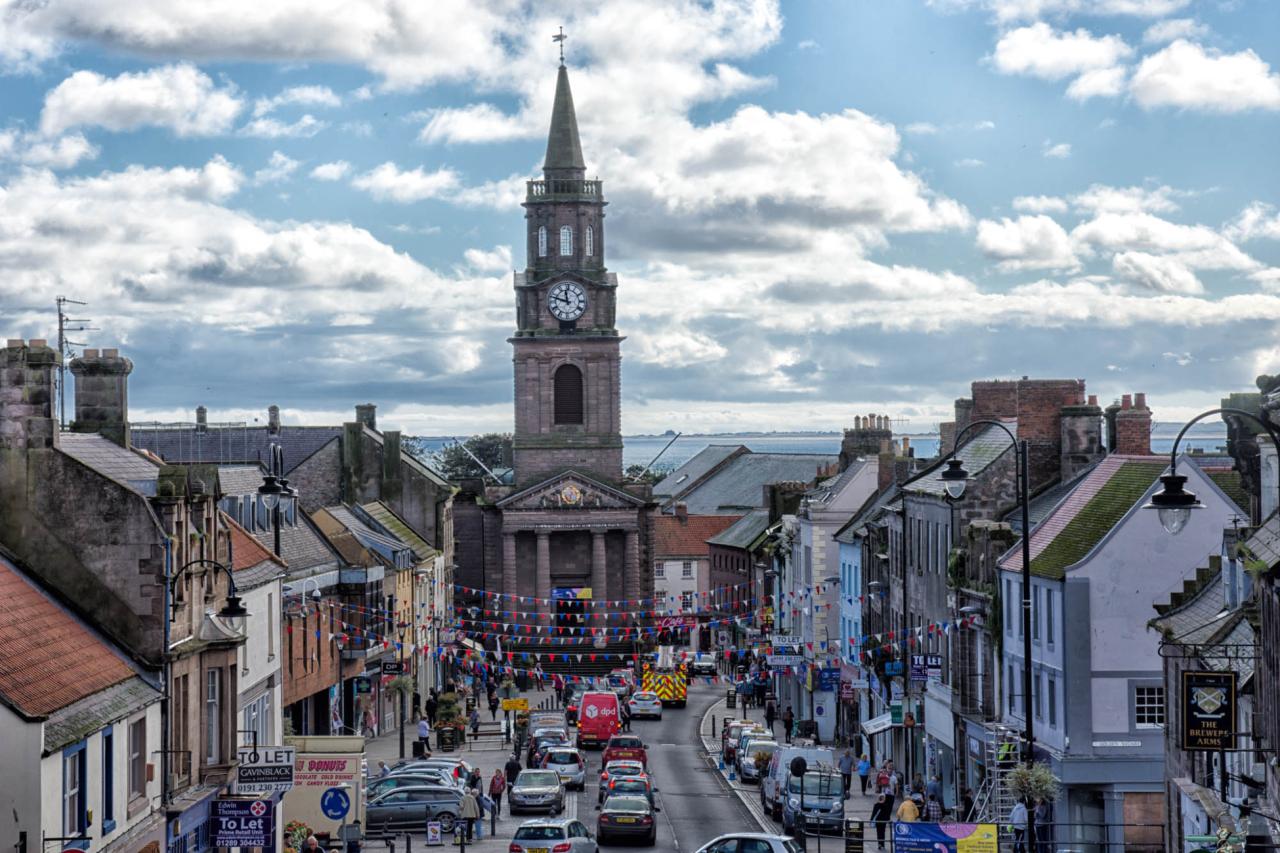
Berwick boasts a diverse economic landscape, driven by a range of industries and businesses. Its strategic location and skilled workforce contribute to its economic vitality.
Major industries in Berwick include manufacturing, healthcare, retail, and tourism. Manufacturing plays a significant role, with companies specializing in sectors such as automotive parts, electronics, and pharmaceuticals. Healthcare is another key sector, with several hospitals and medical centers providing employment and healthcare services to the region. Berwick’s retail sector is thriving, with a mix of local businesses and national chains catering to the needs of the community. Tourism also contributes to the local economy, attracting visitors with its historical landmarks, cultural attractions, and natural beauty.
Employment Sectors
Berwick’s employment landscape is characterized by a diverse range of sectors. The largest employment sector is healthcare, followed by manufacturing, retail, and education. The region’s skilled workforce supports these industries, with a high proportion of workers holding post-secondary qualifications.
Economic Challenges and Opportunities
Berwick faces several economic challenges, including the impact of global economic fluctuations, competition from other regions, and the need for infrastructure improvements. However, the region also has significant economic opportunities. Its strategic location, skilled workforce, and supportive business environment provide a foundation for growth. Berwick is actively pursuing economic development initiatives, including attracting new businesses, investing in infrastructure, and supporting innovation and entrepreneurship.
Geography and Demographics of Berwick
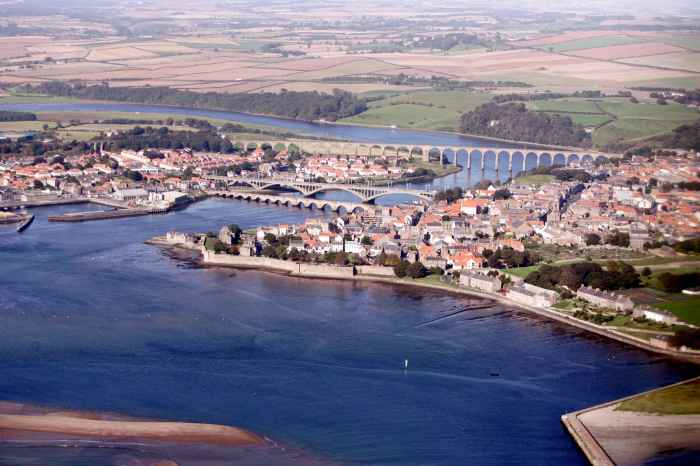
Berwick is located in the southern part of the state, bordered by the Blue Mountains to the west and the Pacific Ocean to the east. The city is situated on a plateau, with an average elevation of 300 feet (91 meters). The terrain is mostly flat, with some rolling hills and valleys. The city is drained by the Berwick River, which flows through the center of the city and empties into the Pacific Ocean.
The population of Berwick is estimated to be 50,000 people. The city is home to a diverse population, with a large number of immigrants from Latin America, Asia, and Europe. The city has a strong economy, with a mix of manufacturing, service, and tourism industries.
The geography and demographics of Berwick have had a significant impact on the development of the city. The city’s location on a plateau has made it a natural transportation hub, and the Berwick River has provided a source of water and power for the city’s industries. The city’s diverse population has contributed to its vibrant culture and economy.
Natural Landmarks
Berwick is home to a number of natural landmarks, including:
- The Blue Mountains: The Blue Mountains are a range of mountains located to the west of Berwick. The mountains are a popular destination for hikers and campers, and they offer stunning views of the surrounding countryside.
- The Pacific Ocean: The Pacific Ocean is located to the east of Berwick. The ocean is a popular destination for swimmers, surfers, and boaters.
- The Berwick River: The Berwick River is a river that flows through the center of Berwick. The river is a popular destination for fishing, kayaking, and canoeing.
Demographics
The population of Berwick is estimated to be 50,000 people. The city is home to a diverse population, with a large number of immigrants from Latin America, Asia, and Europe. The city’s population is growing rapidly, and it is expected to reach 60,000 people by 2030.
The city’s population is relatively young, with a median age of 35. The city has a high percentage of families, and the average household size is 3.5 people. The city’s population is also relatively well-educated, with a high percentage of people holding college degrees.
The city’s economy is strong, with a mix of manufacturing, service, and tourism industries. The city is home to a number of large employers, including a major manufacturing plant, a hospital, and a university. The city’s unemployment rate is low, and the median household income is above the national average.
The city’s geography and demographics have had a significant impact on its development. The city’s location on a plateau has made it a natural transportation hub, and the Berwick River has provided a source of water and power for the city’s industries. The city’s diverse population has contributed to its vibrant culture and economy.
Tourism in Berwick

Berwick boasts a rich tapestry of historical landmarks, natural wonders, and cultural attractions that captivate visitors. From exploring ancient castles to embarking on scenic coastal trails, the town offers a diverse range of experiences.
Berwick, with its intriguing history and captivating charm, boasts an array of attractions that enchant visitors. For those seeking a seamless and convenient travel experience to explore this captivating town, azores airlines offers an array of flight options. Upon arriving in Berwick, travelers can immerse themselves in the town’s rich heritage and discover its hidden gems.
Key Tourist Attractions
- Berwick Castle: A 13th-century fortress that has witnessed centuries of history and offers breathtaking panoramic views.
- Holy Island: A tidal island with a 14th-century priory, a picturesque causeway, and a thriving bird sanctuary.
- Farne Islands: A group of uninhabited islands renowned for their seabird colonies, including puffins, guillemots, and razorbills.
- Bamburgh Castle: A magnificent 11th-century castle perched on a dramatic coastal headland, offering guided tours and stunning views.
- Northumberland Coast Area of Outstanding Natural Beauty: A breathtaking stretch of coastline with sandy beaches, rugged cliffs, and picturesque villages.
Tourism Infrastructure
Berwick is well-equipped to accommodate visitors, with a range of hotels, guesthouses, and bed and breakfasts catering to various budgets. The town also boasts a selection of restaurants, pubs, and cafes, offering local cuisine and international flavors.
Transportation options include regular train services to Edinburgh and Newcastle, as well as local buses connecting Berwick to nearby towns and attractions. The town’s compact size makes it easy to explore on foot or by bicycle.
Recommendations for Visitors
- Plan a visit to Berwick Castle for a historical immersion and panoramic views.
- Take a day trip to Holy Island to experience its unique atmosphere and abundant wildlife.
- Embark on a boat trip to the Farne Islands to witness the incredible seabird colonies.
- Explore the Northumberland Coast Area of Outstanding Natural Beauty by foot, bike, or car, enjoying its scenic landscapes.
- Indulge in local cuisine and hospitality at Berwick’s charming restaurants and pubs.
Potential Areas for Tourism Growth
Berwick has the potential to further enhance its tourism appeal by developing:
- Specialized guided tours highlighting the town’s historical and cultural significance.
- More eco-friendly tourism initiatives, such as promoting sustainable transportation options and protecting the local environment.
- Additional attractions and activities, such as a maritime museum or a dedicated wildlife viewing center.
- Improved marketing and promotion to attract visitors from a wider geographic area.
- Partnerships with local businesses to offer unique tourism experiences, such as farm tours or craft workshops.
Infrastructure and Development in Berwick

Berwick boasts a well-developed infrastructure that supports its growing population and economic activity. The city has a comprehensive transportation network, including major highways, rail lines, and an international airport. Berwick’s utilities, such as electricity, water, and gas, are reliable and widely accessible. The city also has a robust communication network, providing high-speed internet and mobile connectivity.
Ongoing and Planned Development Projects
Berwick is committed to ongoing development projects that aim to improve the quality of life for its residents. These projects include the construction of new schools, parks, and community centers. The city is also investing in infrastructure upgrades, such as road improvements and the expansion of public transportation.
Challenges and Opportunities for Sustainable Development
Berwick faces challenges in balancing economic growth with sustainable development. The city is working to reduce its carbon footprint by promoting energy efficiency and renewable energy sources. Berwick is also committed to preserving its natural resources, including its water supply and green spaces. By addressing these challenges, Berwick can create a sustainable and prosperous future for its residents.
Education and Healthcare in Berwick
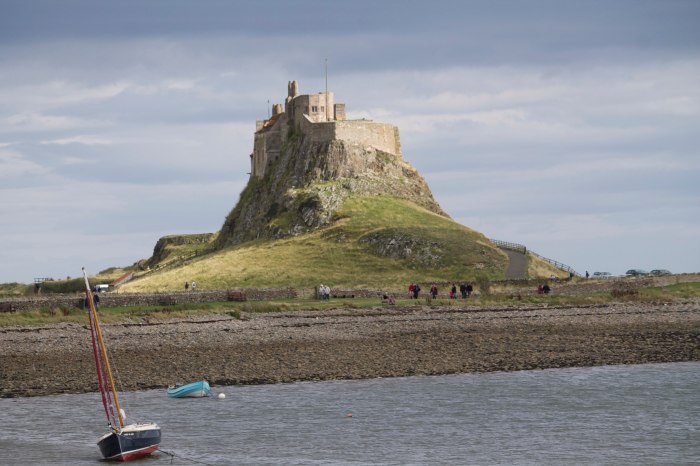
Berwick offers a range of educational institutions and healthcare facilities to meet the needs of its residents. The town has several primary and secondary schools, as well as a further education college. The quality of education in Berwick is generally good, with many schools achieving above-average results in national exams.
Healthcare
Berwick has a modern hospital that provides a wide range of medical and surgical services. The hospital also has a dedicated emergency department and a 24-hour urgent care center. In addition to the hospital, Berwick has several medical clinics and health centers that provide primary care and other healthcare services. The quality of healthcare in Berwick is generally good, with patients reporting high levels of satisfaction with the care they receive.
Areas for Improvement
While the education and healthcare services in Berwick are generally good, there are some areas for improvement. One area is the lack of specialized healthcare services for certain conditions. For example, there is no dedicated cancer treatment center in Berwick, and patients with cancer must travel to other cities for treatment. Another area for improvement is the lack of affordable housing for low-income families. This can make it difficult for families to access the education and healthcare services they need.
Potential Partnerships
There are several potential partnerships that could help to improve the education and healthcare services in Berwick. One potential partnership is with the local university. The university could provide resources and expertise to help improve the quality of education in the town’s schools. Another potential partnership is with the local business community. The business community could provide funding and support for new healthcare initiatives, such as the development of a dedicated cancer treatment center.
Notable Figures from Berwick
Berwick has been home to a number of notable figures who have made significant contributions to the history, culture, and development of the region.
These individuals have left a lasting legacy on Berwick, and their achievements continue to inspire and motivate the community today.
Sir John Betjeman, Berwick
Sir John Betjeman was a renowned English poet, writer, and broadcaster. He was born in London in 1906, but he spent much of his childhood in Berwick, where his father was a vicar.
Betjeman was a prolific writer, and he published over 30 books of poetry, prose, and autobiography. He was also a regular broadcaster on radio and television, and he was known for his witty and engaging style.
Betjeman was a passionate advocate for the preservation of England’s architectural heritage. He was instrumental in the founding of the Victorian Society, and he helped to save many historic buildings from demolition.
Betjeman died in 1984, but his legacy lives on. He is considered one of the most important poets of the 20th century, and his work continues to be read and enjoyed by people all over the world.
Dame Barbara Hepworth
Dame Barbara Hepworth was a renowned English sculptor. She was born in Wakefield, Yorkshire, in 1903, but she moved to Berwick in 1939, where she lived and worked for the rest of her life.
Hepworth was a pioneer of abstract sculpture. She was known for her use of organic forms and her exploration of the relationship between positive and negative space.
Hepworth’s work has been exhibited in galleries and museums all over the world. She is considered one of the most important sculptors of the 20th century, and her work continues to inspire and challenge artists today.
Hepworth died in 1975, but her legacy lives on. The Barbara Hepworth Museum and Sculpture Garden in St Ives, Cornwall, is dedicated to her work, and it is one of the most popular tourist attractions in the region.
Final Review
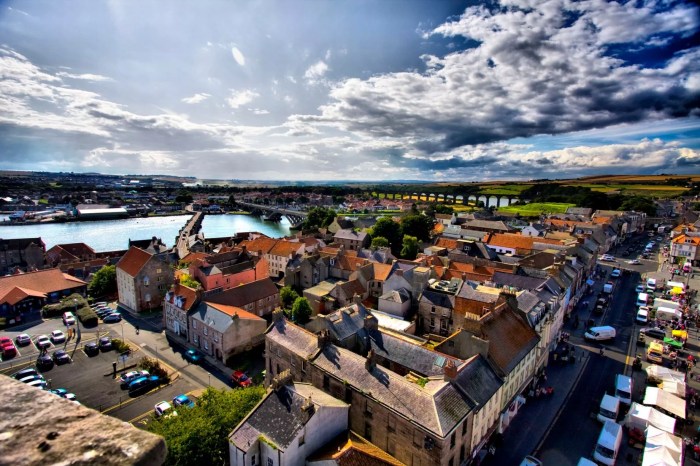
As Berwick continues to evolve, its economic landscape and infrastructure are undergoing a period of transformation. The town is embracing sustainable development, investing in education and healthcare, and fostering a sense of community that ensures its future prosperity. Berwick stands as a beacon of resilience, a testament to the enduring power of a town that has preserved its heritage while embracing the opportunities of the future.
Q&A
What is Berwick most famous for?
Berwick is renowned for its historical significance, architectural heritage, and cultural traditions.
What are the major industries in Berwick?
Berwick’s economy is primarily driven by tourism, agriculture, and manufacturing.
Who is the most famous person from Berwick?
Sir William Wallace, the Scottish warrior and patriot, is one of the most notable figures associated with Berwick.